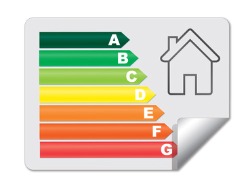Home Inspection Reports and the Law

Edward Coxall provides a summary of some recent changes in property law including changes to home inspection reports and clarification on the ‘cooling-off’ period.
When selling (or letting) properties there are a number of reports that must be available to a prospective purchaser (or tenant) before they enter into a binding commitment. The law relating to two of these, the energy efficiency report (le diagnostic de performance énergétique, DPE) and the risk of exposure to lead report (le constat de risque d’exposition au plomb, CREP), has been amended with effect from 1 January 2012.
The DPE is designed to provide an estimate of the energy consumption of a building and its energy efficiency by classifying it in a comparative table. It also provides an indication of the quantity of greenhouse gases emitted, based on the estimated consumption, as well as advice on how to improve the energy efficiency. The DPE has a shelf life of 10 years (for sales and lettings alike) so it is always worth hanging on to the one acquired when you purchased. Six measures were announced at the end of last year (which came into force on 1 January 2012) designed to improve and make the DPE more reliable:
- improving transparency with regard to consumers by ensuring the person carrying out the tests identifies in a formal document the data that he/she obtains direct from the householder with a view to limiting the risk of fictitious DPE reports;
- improving the reliability of the energy efficiency calculation by increasing the number of elements to take into account in order to provide a more accurate calculation;
- limiting the software available for generating DPE’s to that which has been evaluated by the Environment Agency (ADEME);
- creating an on-line database of DPE’s so as to enable the statistics to be used in forming local and national policy;
- improving the competence of the persons carrying out the tests by increasing the level of difficulty of their exams;
- establishing an online directory of testers and the setting up of an enquiry by the Competition, Consumption and Prevention of Fraud Commission into the property testing sector.The CREP is required where the building was constructed before 1 January 1947 and is designed to test for the presence of lead in coverings (paint etc). The report, which must not be more than 12 months old at the time of the sale, identifies the presence or not of lead and its condition. If the report finds lead in concentrations exceeding 1mg/cm² the owner must commence work without delay to remove the risk of exposure to lead. This obligation is transferred to the purchaser after the sale. On 1 January 2012 it became a requirement for all persons undertaking CREPs to have a certificate from the manufacturer of the testing equipment stating the maximum life span of the radioactive source in the equipment beyond which the equipment cannot be used. Finally, clarification of what constitutes notice of the contract under the SRU law (which gives every purchaser of property a seven day ‘cooling-off’ period starting from the day after the purchaser has received a copy of the purchase contract) has been given. It had always been thought that a copy of the contract could be handed to the purchaser by the agent or notaire and that would be equally as good as sending a copy by recorded delivery (with acknowledgement of receipt by the recipient). However the Supreme French Court of Appeal held in a recent decision that the practise of handing a copy of the contract to the purchaser, without any accompanying deed by which the date of delivery can be evidenced, does not comply with the requirements of the law (article L271-1 of the Code de Construction et de l’Habitation) and accordingly cannot start the seven day ‘cooling-off’ period. It would appear therefore that the practise of sending a copy of the contract by recorded delivery (with acknowledgement of receipt by the recipient) should be adopted universally as it is the only mechanism which provides certainty as to the start date of the cooling-off period.© 2011 Edward Coxall, Mayo Wynne Baxter LLP
Share to: Facebook Twitter LinkedIn Email
More in estate agents, legal, renovation, work
Leave a reply
Your email address will not be published. Required fields are marked *




REPLY